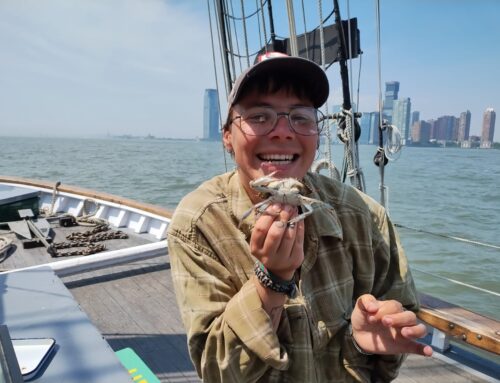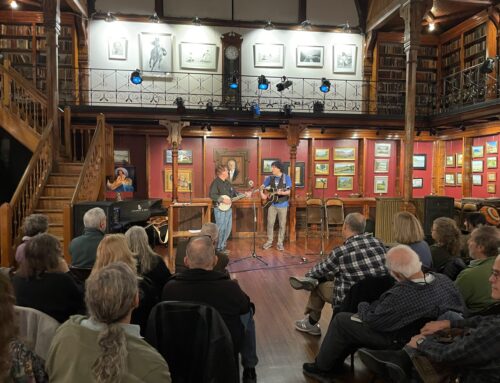Contacts:
Julia Church, Clearwater, 845 265 8080, ext. 7112; julia@clearwater.org
Tina Posterli, Riverkeeper, 914 478 4501, Ext. 239; tposterli@riverkeeper.org
Jay Burgess, Scenic Hudson, 845 473 4440, Ext. 222; jburgess@scenichudson.org
Kate Slusark Kiely, Natural Resources Defense Council, 212 727 4592; kkiely@nrdc.org
CAPITAL REGION/HUDSON VALLEY—April 30, 2013— As the cleanup of PCBs in the Hudson River begins its fourth year, environmental groups – Hudson River Sloop Clearwater, Natural Resources Defense Council (NRDC), Riverkeeper, and Scenic Hudson – continue to watch General Electric (GE) closely to ensure that the river remains on target to be restored to a cleaner state as soon as possible. Critical to this will be addressing hotspots of toxic pollution that are not included in the company’s original clean-up plan.
This year, the GE clean-up effort moves into sections of the Hudson River where the dredging areas are fewer and farther apart. Unfortunately, 136 acres of heavily PCB-contaminated sediment were identified in this area after the original clean-up plans were drafted, and GE has not yet committed to include it as part of its clean-up. Most of the 136 acres is adjacent to the current areas to be dredged by GE, and a large portion of it falls within the state navigation channel.
In order to secure the public health and allow the river’s natural resources to heal decades sooner, GE must completely remove this additional PCB contamination. And the best time to undertake the remediation of these 136 acres is now, while the company is actively dredging in the river.
Manna Jo Greene, Environmental Director at Clearwater, said: “Because the cleanup has now moved into the area of the river that is most affected, we hope that GE will expand the area it’s willing to consider remediating, especially with regard to dredging in the navigational channel and removing contaminated sections immediately adjacent to the planned dredging area.”
Johanna Dyer, Attorney for NRDC added: “As GE resumes dredging, we hope they will commit to a more thorough cleanup that catches additional, recently discovered pockets of chemical pollution that remain a threat to the people, businesses and wildlife that depend on the Hudson River. To knowingly leave this waste behind would be to leave communities and local governments holding the bag after GE’s decades of toxic dumping.”
“By failing to address this 136 acres of highly contaminated sediment while the company is mobilized in the area, GE threatens the recovery of the Hudson River and denies the public navigable access to the Upper Hudson River,” noted Abigail Jones, Staff Attorney at Riverkeeper. “The communities along the Hudson River have dealt with the problems stemming from the largest Superfund site in the nation for far too long. GE cannot afford to undercut its progress to-date by allowing this unremediated sediment to recontaminate the River and hinder the economic recovery of the Hudson River communities.”
“The beginning of the fourth season of PCB dredging in the upper Hudson Superfund Site is a time for all Hudson Valley residents to realize they were right all along,” said Althea Mullarkey, Public Policy & Special Project Analyst at Scenic Hudson. “We said it 30 years ago and we know it now, permanent removal of highly contaminated sediment from the river bottom is the only path forward to a truly healthy and economically vibrant Hudson River. As General Electric moves its dredging operations to the next part of the river, we hope they also will take this lesson to heart and clean up the 136 acres of PCB contamination that would remain behind under the current remediation plan, a plan that leaves a continuous source of pollution to the lower Hudson and an overwhelming barrier to navigational shipping in the Champlain Canal. The communities along the Hudson and the people of New York have been denied the full economic benefits of one of their greatest resources for nearly two generations. We hope the company will do right by all of us and complete the job while they are on the water and mobilized.”
The start of the 2013 dredging season also coincides with the recent application of the New York State Canal Corporation – the agency responsible for maintaining the State’s navigational channels – for federal dredging permits for certain sections of the Champlain Canal. The environmental groups have voiced strong support for the Canal Corporations’ ability to maintain the navigation depth of the channel in order to spur economic development in the area, but recommended additional monitoring and health and safety precautions similar to those required in GE’s current dredging operations. The Canal Corporation has been unable to properly maintain the Champlain Canal for over 30 years to due to heavy PCB contamination in the navigation channel, and it is imperative that GE expand its dredging to include these sections.
The environmental groups encourage GE to recognize this opportunity to broaden the good work it has started in the Hudson River and do the necessary work to achieve a thorough and effective restoration of the river.
###
About Clearwater: For over 40 years, Hudson River Sloop Clearwater has been at the forefront of the environmental movement as champion of the Hudson River, working to help pass landmark legislation like the Clean Water Act, providing innovative educational programs, environmental advocacy, and musical celebrations, including the renowned annual Clearwater Festival, to inspire, educate, and activate millions of people. Founded by music legend and environmental activist Pete Seeger, the organization began with the launch of the sloop Clearwater in 1969 —a majestic replica of the sloops that sailed the Hudson in the 18th and 19th centuries. The organization’s strong connection to youth, environmental education, and its agenda to create the next generation of environmental leaders, are all part of building and strengthening a green economy and a more inclusive and diverse environmental movement. Utilizing the greatest natural resource in the region, the Hudson River, Clearwater has become the grassroots model for producing positive changes to protect our planet. Today, Clearwater continues Pete Seeger’s legacy as America’s environmental flagship organization. www.clearwater.org The Natural Resources Defense Council (NRDC) is an international nonprofit environmental organization with more than 1.3 million members and online activists. Since 1970, our lawyers, scientists, and other environmental specialists have worked to protect the world’s natural resources, public health, and the environment. NRDC has offices in New York City, Washington, D.C., Los Angeles, San Francisco, Chicago, Livingston, Montana, and Beijing. Visit us at www.nrdc.org and follow us on Twitter @NRDC. Riverkeeper is a member-supported, watchdog organization dedicated to defending the Hudson River and its tributaries and protecting the drinking water supply of nine million New York City and Hudson Valley residents. www.riverkeeper.org Scenic Hudson works to protect and restore the Hudson River and its majestic landscape as an irreplaceable national treasure and a vital resource for residents and visitors. A crusader for the valley since 1963, we are credited with saving fabled Storm King Mountain from a destructive industrial project and launching the modern grass-roots environmental movement. Today with more than 25,000 ardent supporters, we are the largest environmental group focused on the Hudson River Valley. Our team of experts combines land acquisition, support for agriculture, citizen-based advocacy and sophisticated planning tools to create environmentally healthy communities, champion smart economic growth, open up riverfronts to the public and preserve the valley’s inspiring beauty and natural resources. To date Scenic Hudson has created or enhanced more than 50 parks, preserves and historic sites up and down the Hudson River and conserved more than 30,000 acres. www.scenichudson.org




